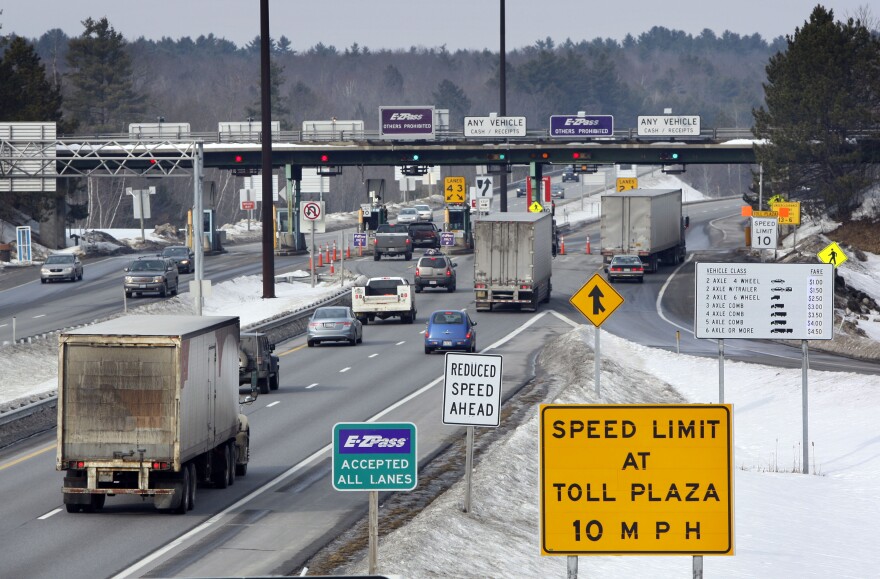Maine government workers have reduced their car travel by 1 million vehicle miles a week since the start of the pandemic, thanks to the rapid, wholesale adoption of telework policies.
The preliminary data are opening an unexpected window on the future of telecommuting and its potential to deliver substantial reductions in global warming pollution.
Last year, before anyone heard of COVID-19, Maine’s Legislature authorized a comprehensive analysis of telework’s potential costs and benefits for state government and its employees. But as the research project got underway, the pandemic hit, and by April of this year some 85 percent of the state government’s workforce — excepting public safety positions — was suddenly working from home.
In a research update to state lawmakers, Commissioner of Administration and Financial Services Kirsten Figueroa says that dropped the number of vehicle miles state workers drove by more than a million miles each week. In the 30 weeks since, the state workforce saved an estimated 32 million miles worth of road time compared to the previous year.
“I would say this is seismic,” says state Rep. Seth Berry, who co-chairs the Legislature’s Committee on Energy, Utilities and Technology, and was the original sponsor of telework study legislation.
As Berry notes, the pandemic forced a previously unimaginable experiment in the rapid adoption of telecommuting policies and practices. And he says it proves that telework holds big potential for reducing tailpipe emissions of carbon dioxide and other pollutants that contribute to global warming.
“The state of Maine’s climate emissions, 54 percent of them come from transportation, and if a large employer like the state of Maine can shift to 85 percent telework, that’s massive,” he says.
The state’s memo estimated that CO2 emissions went down by 233,000 pounds a week as a result of the work-at-home effort. That means some 7 million pounds of CO2 emissions were averted since April.
(Note on this memo: In an email, a spokeswoman for the Department of Administration and Financial Services says the correct estimate of total CO2 savings from April through November is 7 million pounds, and that a reference to the ozone layer was an error.)
David Costello, director of Clean Energy Programs at the Natural Resources Council of Maine, says the findings demonstrate that telework deserves more prominence in climate-change policy in Maine and beyond.
“Particularly in the near-term while we wait for consumers to quite frankly fall in love with zero-emitting vehicles, electric vehicles,” he says. “This is a great transition opportunity.”
And potentially a lot cheaper than massive investments in electric vehicle or renewable energy infrastructure. And according to the state memo, preliminary data from an internal survey of state workers found that 89 percent of respondents said they were satisfied with telework.
“Not only governments but companies are realizing that workers do get work done. And it’s something that many organizations going and businesses going forward, that they’ll build in the remote work opportunities,” Costello says.
Permanent, large-scale adoption of teleworking likely would create some new challenges. Those range from maintaining productivity among isolated workers, to addressing racial, class and geographic inequities in access to high-speed broadband or other resources needed for the virtual workplace.
“There seems to be a class problem here,” says state Rep. Ralph Tucker, a Democrat from Brunswick.
Tucker points out that while so-called “knowledge workers” highlighted in the state report may easily transition to a home office, the jobs of many others require physical presence.
“What kind of class stratification do we have here? Are we going to let the professional class, white collar workers, work at home, but require everybody else, all the delivery people, retail people, construction people, clerical folks, are we going to require that they continue to commute?” he says.
Still, Tucker, who co-chairs the Legislature’s Environment and Natural Resources Committee, says that while preliminary, the sheer scale of the estimated pollution reduction from telework took his breath away.
“It points out that solutions that we might have to use in order to meet our climate emissions reduction goals, may shift the way we work and play,” he says, “a lot.”
Figueroa declined comment on her memo, saying she would wait until an outside consultant, the Segal Group, completes its work and publishes a final report reviewed by stakeholders, including state worker unions. The final product will include survey data collected about telework from other New England states, broadening even further the real-world data that the pandemic has so quickly generated.


